I’m going to tell you everything you’ve always wanted to know about hornworms in the garden. If you had told me I would be writing this 10 years ago, I would have laughed. Yep, that’s me now…the bug enthusiast. You’re probably coming here to learn how to get rid of hornworms from your tomato plants, so I have some ecologically friendly, creative solutions for you.
I know hornworms might look kind of scary… they do have a horn and they are rather large. Hornworms are about 4″ long and they are as big as one of my fingers. However, they are just a caterpillar that will turn into a beautiful, enormous moth.
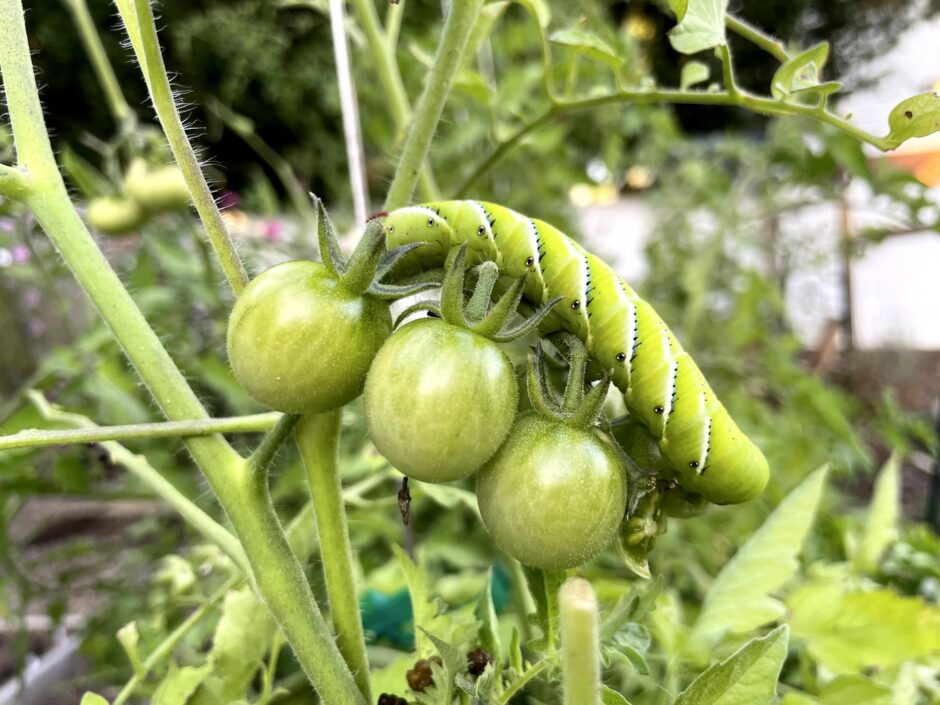
Hornworms can be very destructive in the garden. I get it! They can eat up a whole plant in no time flat. Before we learn how to handle the situation, let’s learn more about this amazing insect.
Chomp, chomp. Bye, bye tomato branches, leaves and tomatoes. The hungry caterpillar, indeed!
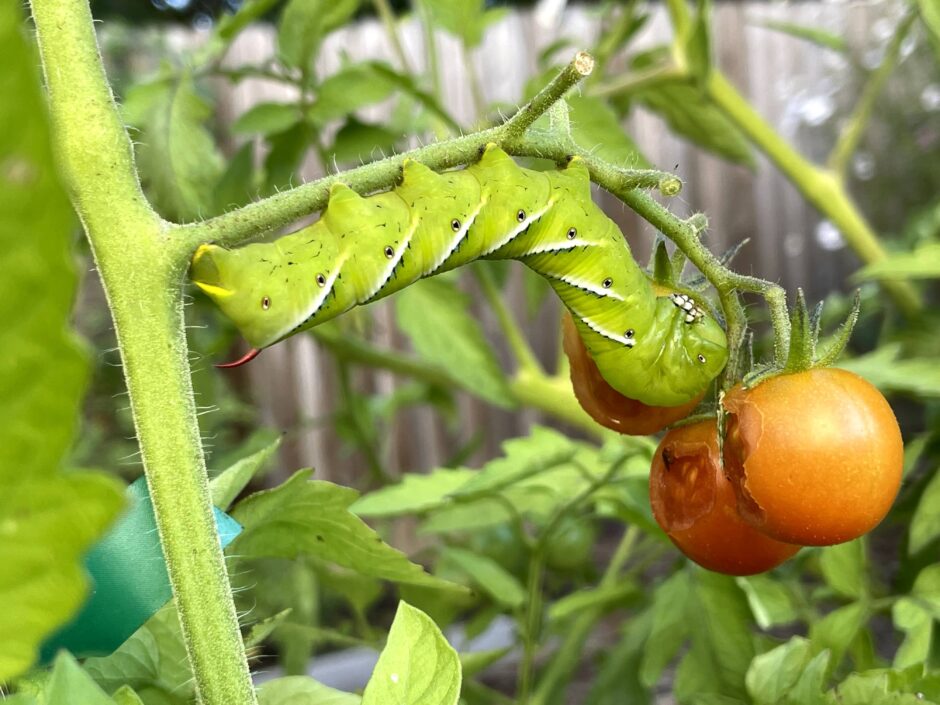
You can see the damage on the tomato plant below. Leaves and branches are just gone.
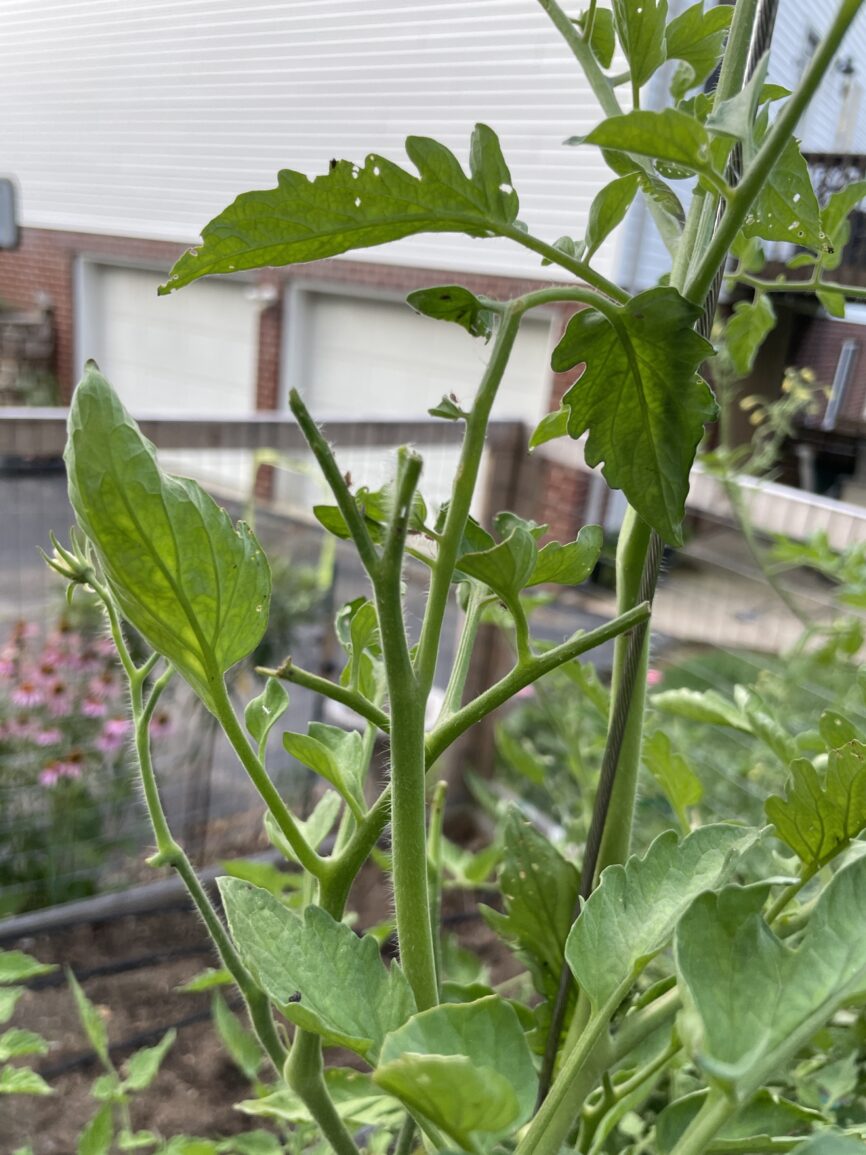
Two kinds of garden hornworms
There are two main kinds of hornworms typically seen in gardens: the tomato hornworm and the tobacco hornworm. The tomato hornworm caterpillar has eight v-shaped lines and a black horn. The tobacco hornworm has 7 white lines and a red, curved horn.
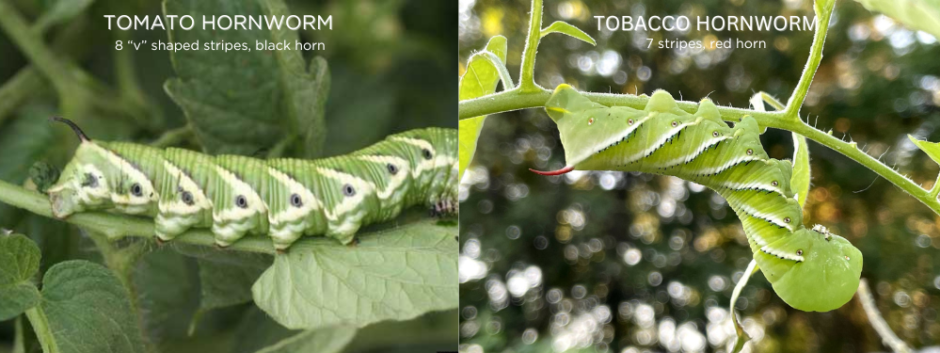
What does a hornworm turn into?
Hornworms are the caterpillars for some very cool moths. The tomato hornworm (Manduca quinquemaculata) becomes a Five-spotted Hawkmoth.
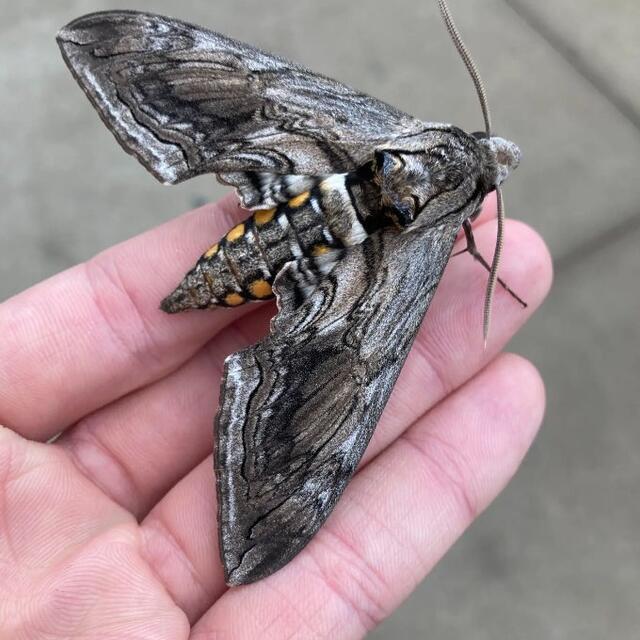
The tobacco hornworm (Manduca sexta) becomes a Carolina Sphinx Moth.
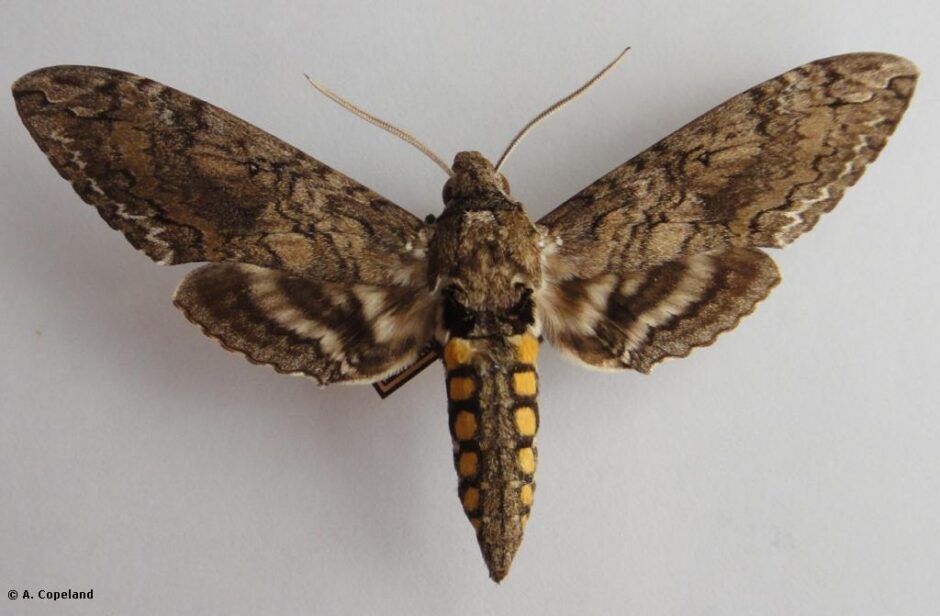
How to control hornworms in the garden?
I wanted to show you the beautiful moths that they turn into first before you decide what to do about them chomping your tomatoes. They are super cool insects, right? Wouldn’t it be cool if you could protect them and your plants? You can! I have three ecologically friendly hornworm solutions.
The sacrificial tomato plant
I think hornworms are fascinating and I didn’t want to kill them, so I came up with a brilliant solution. Make sure to have an extra tomato plant that you can use as your sacrificial plant just for these awesome hornworms. I keep my extra plant in a pot away from my garden. Whenever I find hornworms, I move them to the sacrificial plant and problem solved!
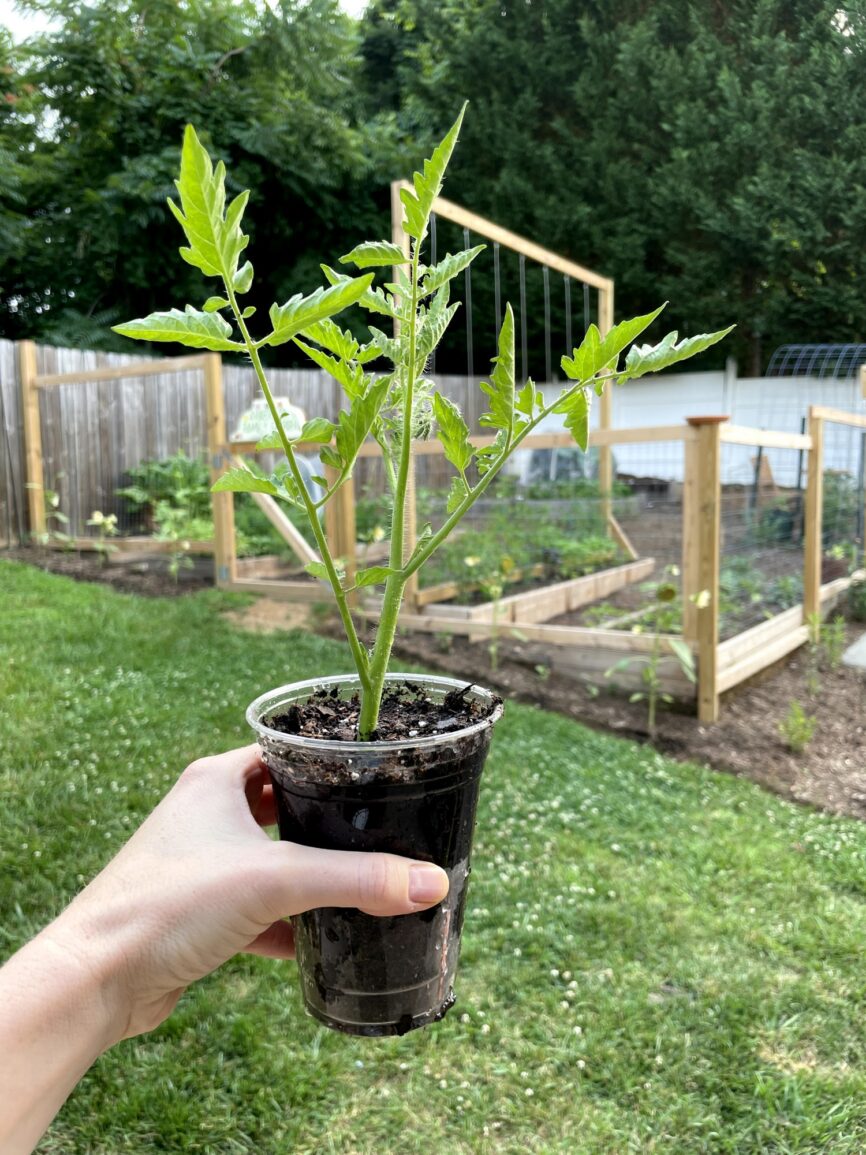
It’s super easy to set up your extra plant. Once your tomato plants get growing, just pull off a sucker and plant it in your pot. Easy, free extra plant.
Hornworms are fascinating to watch. If you have kids, they will love learning about them and watching them. My son names them and few examples are Bighorn and Sir Eats a Lot.
Longer-term circle of life solution
If you can commit to organic gardening practices, it will pay off in the long run. I have found that many situations will take care of themselves if you just give nature a chance. I became interested in hornworms and was excited to see them each year. However, a couple of years ago, by the time I would see one, it was already half dead, courtesy of tiny parasitic wasps. The female braconid wasp will lay eggs under the skin of the hornworm. As the eggs hatch, the larvae feed on the insides of the hornworm and then they eat their way out and spin cocoons on the outside, which is what you see. Eventually, adult wasps will emerge from the cocoons and the hornworm will die. Crazy, right?
If you are spraying for bugs in your garden, then you will be killing the beneficial bugs along with the pests. Therefore, you won’t give the beneficial bugs a chance to take care of your problems for you. Give nature a chance!
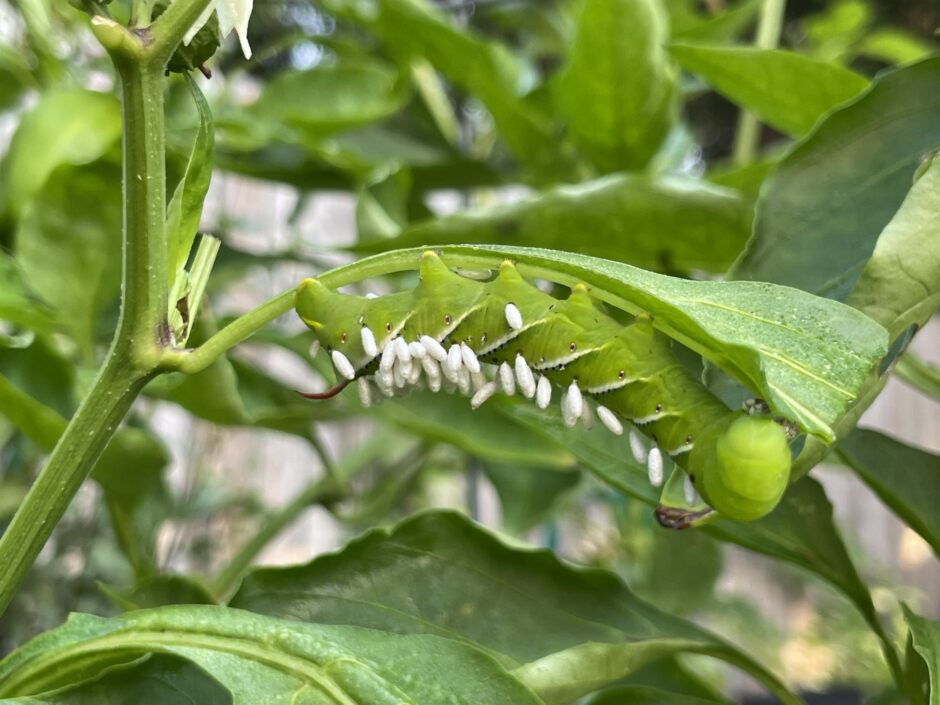
Hornworms as bird food
The other ecologically friendly option would be to pick the hornworms off of your plants and feed them to your chickens or put them far away from your plants for birds to find. Did you know that a nest of baby birds will consume thousands of caterpillars? Yes, thousands. A study was done and it was determined that a single pair of breeding chickadees needed to catch 7,500 caterpillars to rear one clutch of growing fledglings. I mean, WOW! They are vital for birds, so please don’t just smash them.
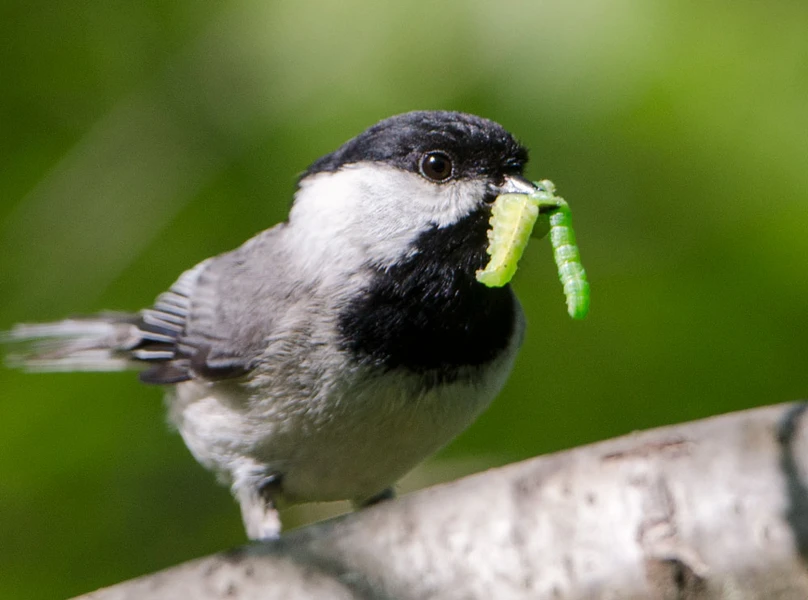
What do the eggs look like?
If you want to do some preventative work, then you can spot the eggs and move those to your newly established sacrificial tomato plant.
The hornworm eggs are tiny, round, green eggs.
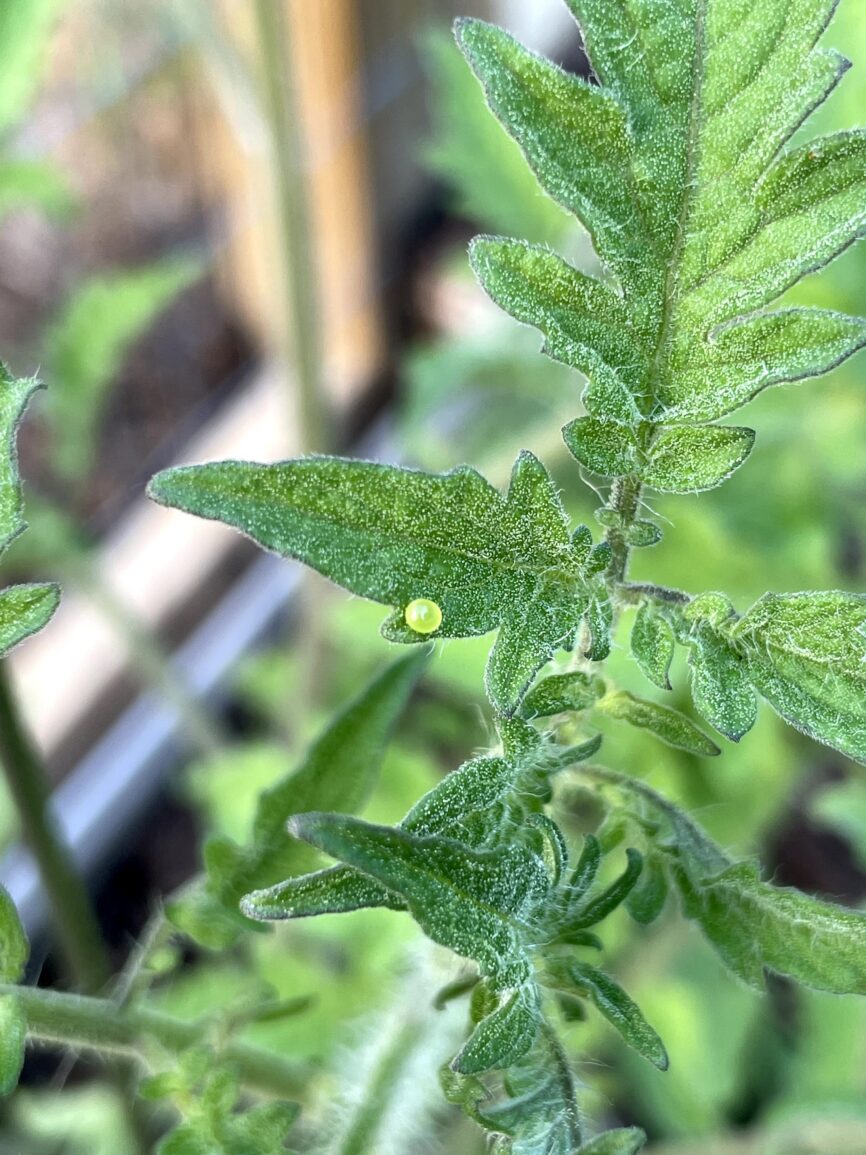
To smash or not to smash?
I hope I have given you some better options for dealing with hornworms and I hope you might employ these methods rather than spraying or smashing the hornworms. If I have changed your mind, drop me a line to let me know. 🙂
Look how cool their prolegs are…
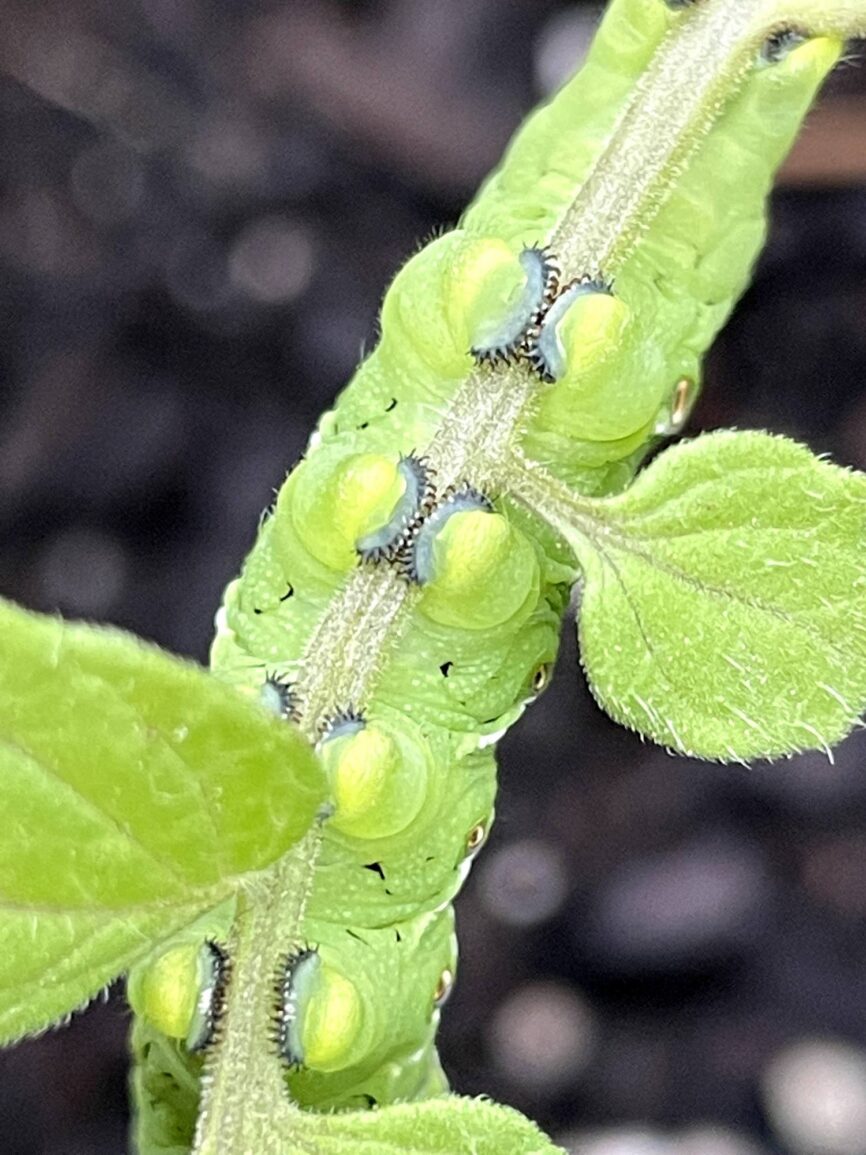
Grow with me
See my other garden or wildlife posts.
Get new posts in your inbox by subscribing.
Follow on Instagram.

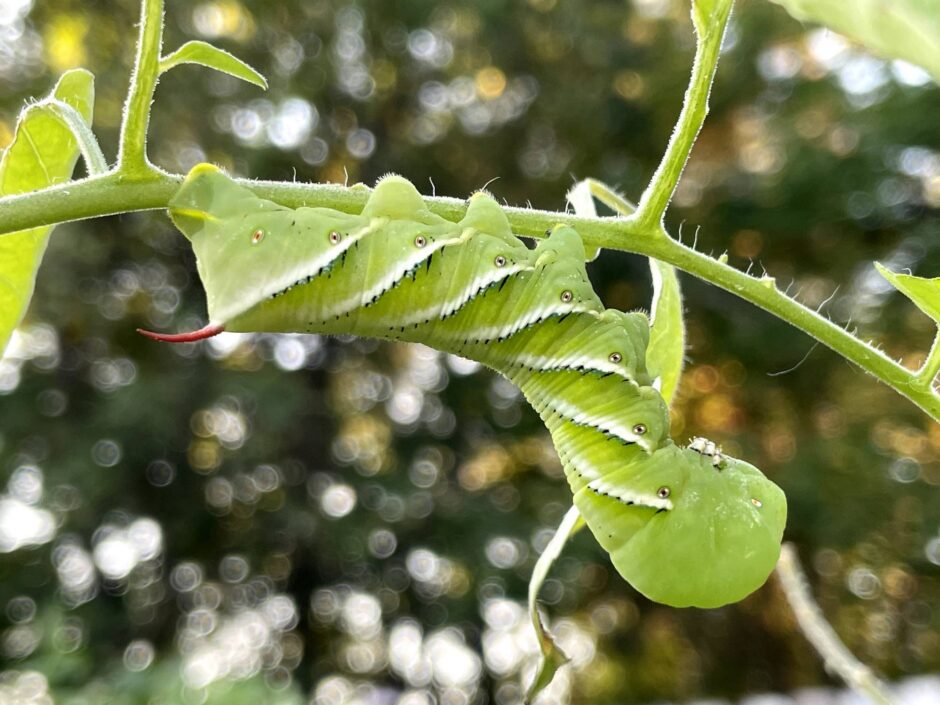
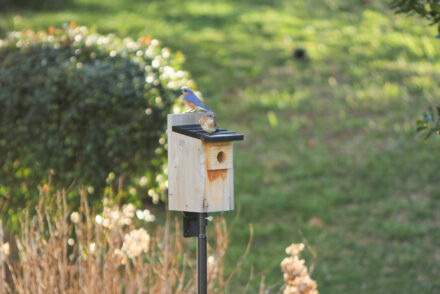



No Comments